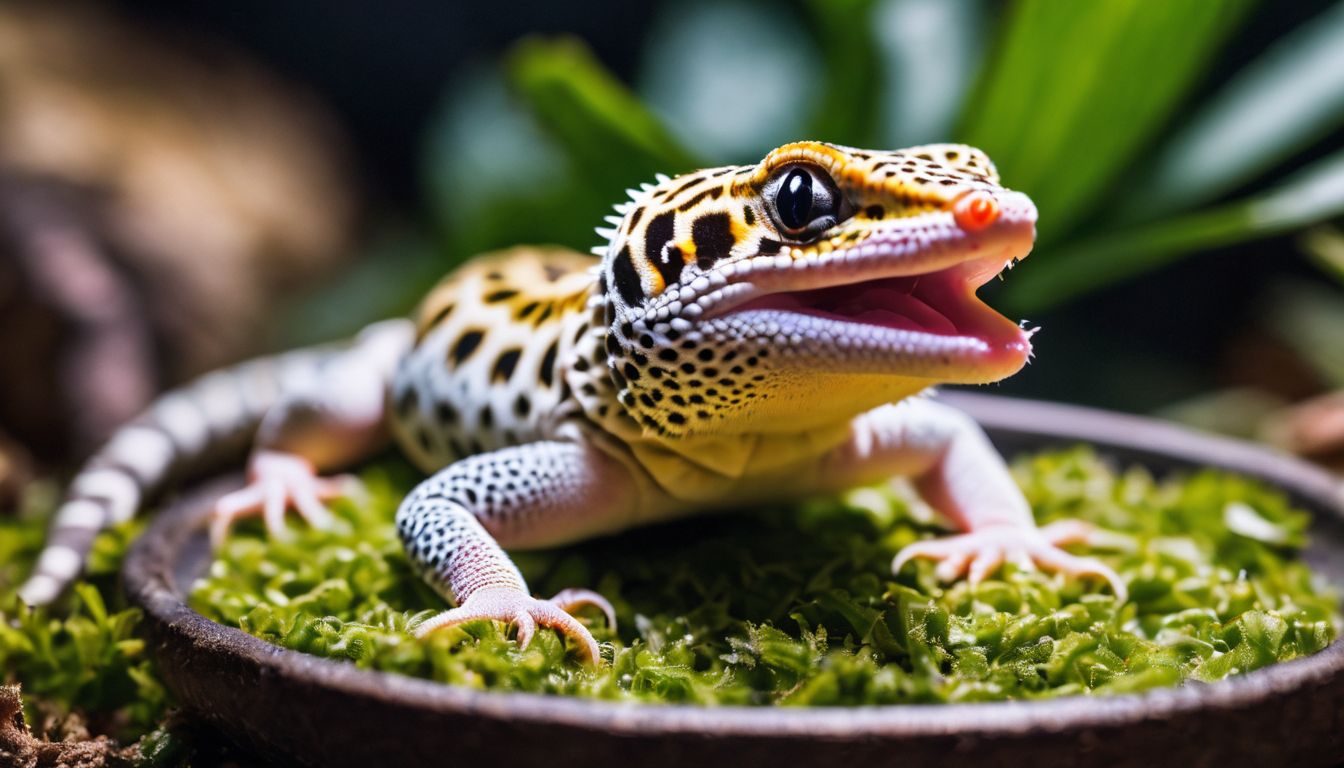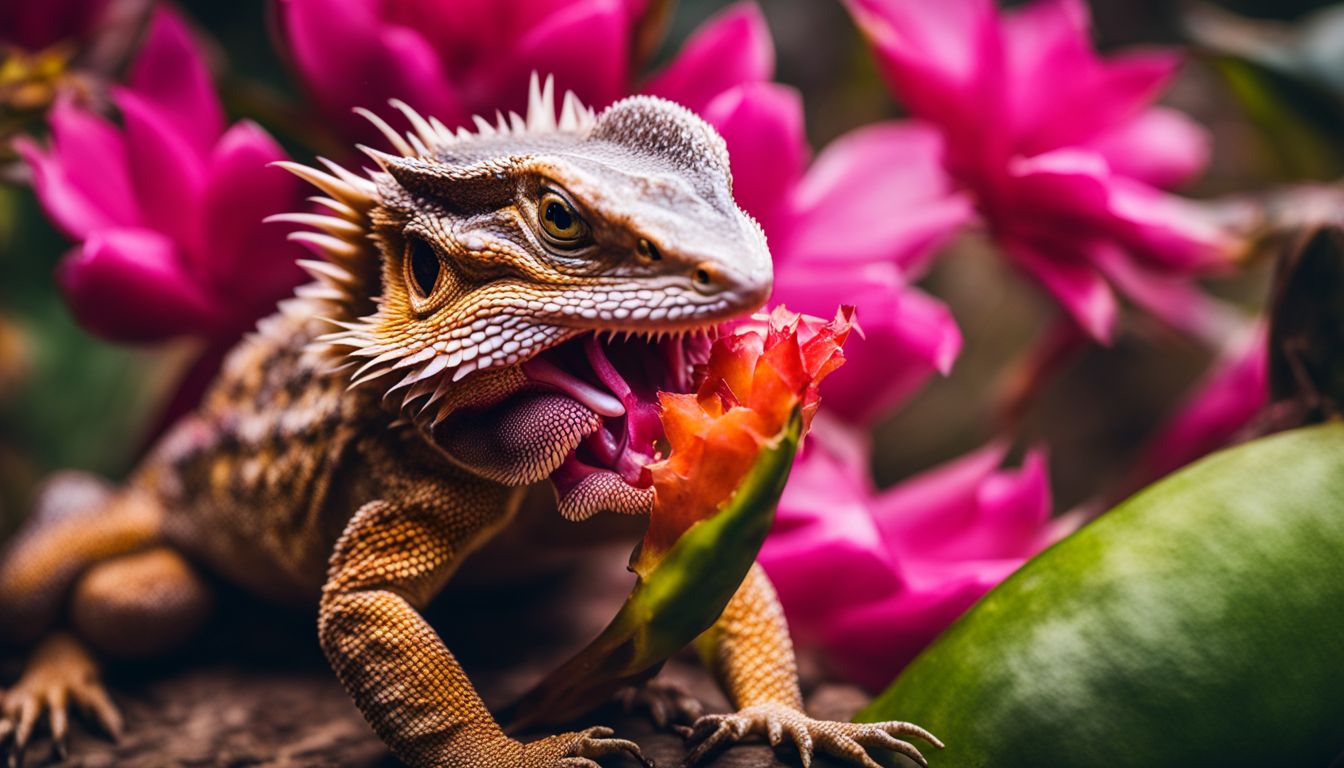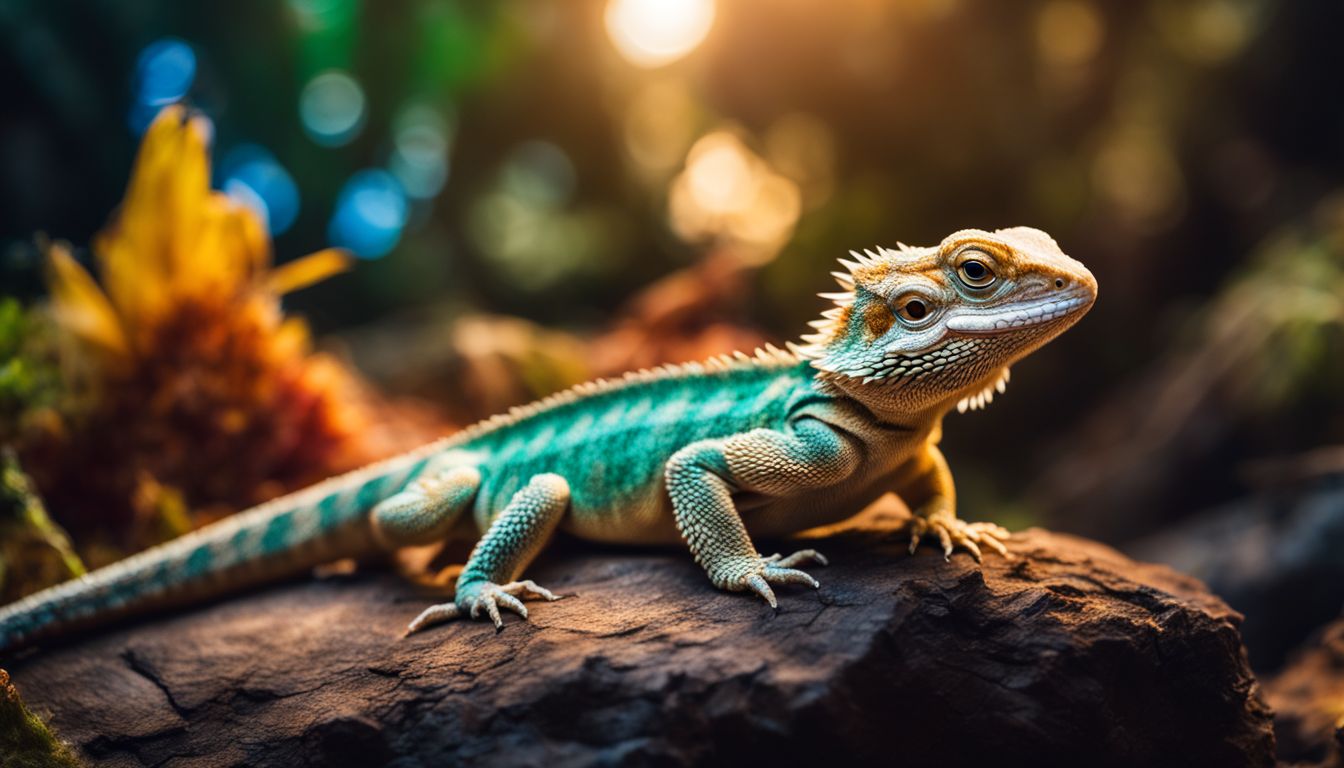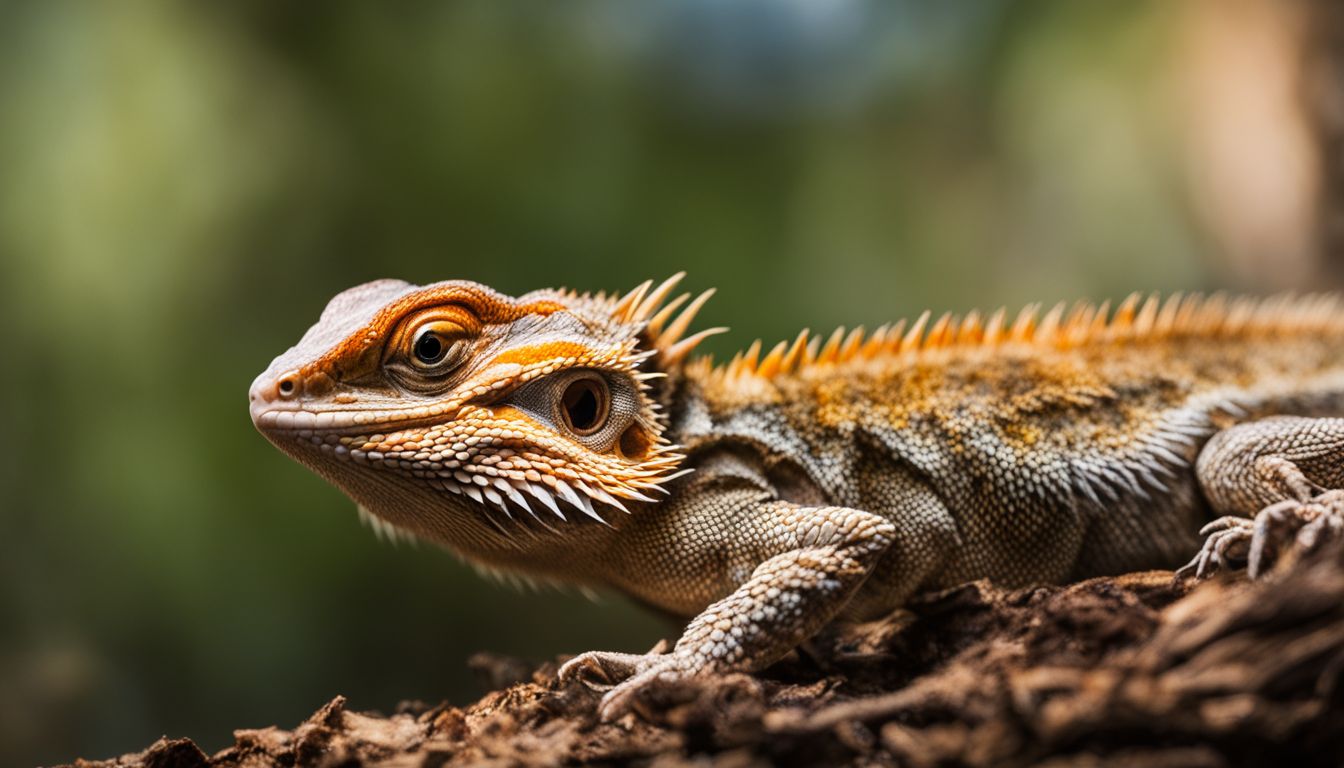If you’ve recently welcomed a leopard gecko into your life, you might be wondering about the best treats to offer your new scaly friend. Wax worms are often mentioned as a tasty snack for these reptiles, but how many should you feed them? It’s crucial to get it right, as feeding your gecko the proper amount can make all the difference in their health and happiness.
Did you know that wax worms are considered a high-fat treat and need to be given in moderation? That’s why knowing just how many to serve is essential for your leopard gecko’s well-being.
Our guide is packed with tips on balancing indulgence with nutrition, tailoring meals to your pet’s age and size. We’ll help ensure that your gecko stays sprightly and satisfied without going overboard.
By reading on, you’ll discover not only the ideal serving size of wax worms but also alternative dietary options to keep things diverse and nutritious. Get ready for happier meal times ahead!
Key Takeaways
- Feed adult leopard geckos 2 – 4 wax worms once or twice a week alongside other insects for balanced nutrition, avoiding potential risks of obesity and nutritional imbalances.
- For juvenile geckos, provide smaller portions of about five pieces of wax worms daily until they reach around 4 inches in length, while gradually introducing diverse insect options to prevent over-reliance on any single type of food.
- Offer a varied diet including roaches, mealworms, super worms, crickets, and wax worms to ensure the gecko gets different vitamins and minerals needed for good health and to prevent picky eating habits. Monitor their consumption and include physical activity through hunting different insects.
Nutritional Profile of Wax Worms

Wax worms can be a yummy snack for your leopard gecko. These little grubs are high in fat, which makes them great for adding to a gecko’s diet now and then. They don’t have as much protein compared to other bugs like crickets or mealworms.
This is why wax worms should only be treats.
Even though wax worms are tasty, they aren’t the best choice for every meal. Your pet needs different kinds of food to stay healthy. Just as people need a balanced diet, your leopard gecko does too! So it’s smart to give wax worms just sometimes and not too many at once.
The Appeal of Wax Worms to Leopard Geckos

Leopard geckos love wax worms because they are soft and easy to eat. These little treats are tasty for the geckos, making them very appealing as a snack. Wax worms have a lot of fat, which can help geckos that need extra energy or those trying to get stronger.
They give these small lizards something different from their normal food like mealworms and crickets. Feeding wax worms is simple and doesn’t make much mess, so people who take care of leopard geckos enjoy giving them as well.
But it’s important not to give too many because they can be unhealthy in large amounts. Leopard gecko feeding habits should include treats like waxworms now and then, not all the time.
Moving on from this tempting treat, let’s look into why it’s risky to offer too many wax worms to your spotted friend.
Risks of Overfeeding Wax Worms
Overfeeding wax worms can lead to potential risks such as obesity and nutritional imbalances, so it’s important to understand the proper feeding guidelines for your leopard gecko. If you want to know more about how many wax worms to feed a leopard gecko, keep reading for a complete guide!
Potential for Obesity
Wax worms are like candy for leopard geckos. They taste great to them, but too much can lead to obesity. Just like people, when leopard geckos eat more calories than they need, they gain weight.
Since wax worms are high in fat, feeding your leopard gecko too many can make them overweight. An obese leopard gecko can have health problems and may not live as long.
To keep your pet healthy, only give them a few wax worms as a special treat. Stick to the schedule of offering these treats only once or twice a week at most. Watching how often and how much you feed wax worms helps prevent your leopard gecko from getting too heavy while still letting them enjoy this yummy food now and then.
Risk of Nutritional Imbalance
Feeding too many wax worms to your leopard gecko can lead to nutritional imbalance. Wax worms are high in fat and low in other essential nutrients, so overfeeding them can cause health problems for your pet.
It’s important to offer a balanced diet that includes a variety of insects like roaches, mealworms, super worms, and crickets alongside wax worms as an occasional treat. This varied diet helps prevent any potential nutrient deficiencies and ensures your leopard gecko stays healthy.
Moderation is key when it comes to feeding wax worms to avoid any nutritional imbalances and keep your pet happy and thriving.
Recommended Wax Worm Feeding Guidelines
Adult leopard geckos should be fed wax worms in moderation, while juvenile geckos may have slightly more. Read on to learn more about how to properly feed your leopard gecko with wax worms.
Feeding Frequency for Adult Leopard Geckos
Adult leopard geckos should be fed wax worms as a treat once or twice a week, and the serving size can range from 2-4 worms depending on their size and age. It’s important to avoid overfeeding them to prevent potential health issues like obesity or nutritional imbalance.
Their diet should also include other insects like roaches, mealworms, super worms, and crickets for balanced nutrition. Remember not to rely solely on wax worms as their main food source but rather as an occasional indulgence within their varied diet plan.
Monitoring their wax worm consumption is crucial to keep them healthy.
Quantity: Moderation is Key
When considering the quantity of waxworms to feed your leopard gecko, it’s essential to practice moderation. For adult geckos, offering waxworms as a treat once or twice a week with 2-4 worms per serving is recommended, taking into account the gecko’s size and age.
Baby leopard geckos should be fed small amounts of about five pieces of waxworms daily until they reach about 4 inches in length. Even for juvenile geckos, it’s important to include waxworms in their diet in moderation, ensuring not to overfeed them.
Monitoring the consumption of waxworms and incorporating other insects like roaches, mealworms, super worms, and crickets is crucial for a varied and balanced diet.
Special Considerations for Juvenile Geckos
When considering juvenile geckos, it’s important to feed them smaller portions of about five pieces of waxworms a day until they reach around 4 inches in length. It’s crucial to provide a balanced diet consisting of roaches, mealworms, super worms, crickets, and wax worms while monitoring their consumption to prevent overfeeding.
Remember that waxworms should be given as an occasional treat and not the sole food source for juvenile geckos. Moderation is key when including waxworms in their diet. Keep an eye on their intake and adjust accordingly to ensure they stay healthy and strong.
By offering a varied selection of insects from an early age, young geckos can develop diverse eating habits that will benefit their overall health. Monitoring the frequency and quantity of wax worm feedings is essential to avoid potential risks such as obesity or nutritional imbalance in juvenile geckos.
Exploring Other Insect Options for Leopard Geckos
Leopard geckos can also eat mealworms and crickets as part of their diet.
- Roaches: A good source of protein and relatively easy to digest.
- Super worms: Suitable for adult geckos due to their larger size, providing a rich source of nutrients.
- Crickets: High in protein and fiber, stimulating natural hunting behaviors in geckos.
- Dubia roaches: Nutritious and high in protein, a suitable alternative to crickets.
- Black soldier fly larvae: Provides essential nutrients and is an environmentally friendly option.
The Importance of a Varied Diet
A varied diet is very important for the health of your leopard gecko. It provides a range of nutrients and helps prevent boredom with their food. By offering a variety of insects like roaches, mealworms, super worms, crickets, and wax worms, you ensure that your gecko gets the different vitamins and minerals it needs to stay healthy.
With this varied diet, you also prevent your gecko from getting picky about its food.
In addition to promoting good health in leopard geckos, a diverse diet keeps them active as they hunt different insects. This physical activity is good for their well-being. Remember not to rely solely on wax worms but offer other options too such as crickets and mealworms to keep their diet interesting while meeting their nutritional needs.
Conclusion
In conclusion, understanding how many wax worms to feed a leopard gecko is crucial for their health and well-being. By offering this treat in moderation, you can ensure your gecko’s diet remains balanced.
This practical approach can lead to significant improvements in their overall nutrition. Remember, a varied selection of insects plays a key role in providing essential nutrients for your pet.
Always monitor their consumption and enjoy the rewarding experience of caring for these fascinating reptiles.
Discover more about the variety in your pet’s diet by exploring if leopard geckos can safely indulge in isopods here.
FAQs
1. How many wax worms should I feed my leopard gecko?
Feed 2-5 wax worms as an occasional treat, not as a regular diet, to prevent obesity in your leopard gecko.
2. Can leopard geckos eat only wax worms?
No, it’s essential to provide a varied diet for your leopard gecko that includes other insects like crickets and mealworms along with the occasional feeding of wax worms.
3. Are there any risks associated with feeding too many wax worms to a leopard gecko?
Feeding too many wax worms can lead to health issues such as obesity, so it is important to offer them in moderation alongside a balanced diet.
4. How often should I feed my leopard gecko wax worms?
As an occasional treat, you can offer your leopard gecko 2-5 wax worms once or twice a week while ensuring they have a diverse insect-based diet overall.
5. Is it necessary to gut load the wax worms before feeding them to a leopard gecko?
Yes, it’s crucial to gut load (feed nutritious food) the wax worms before offering them to your leopard gecko for proper nutrition transfer.




